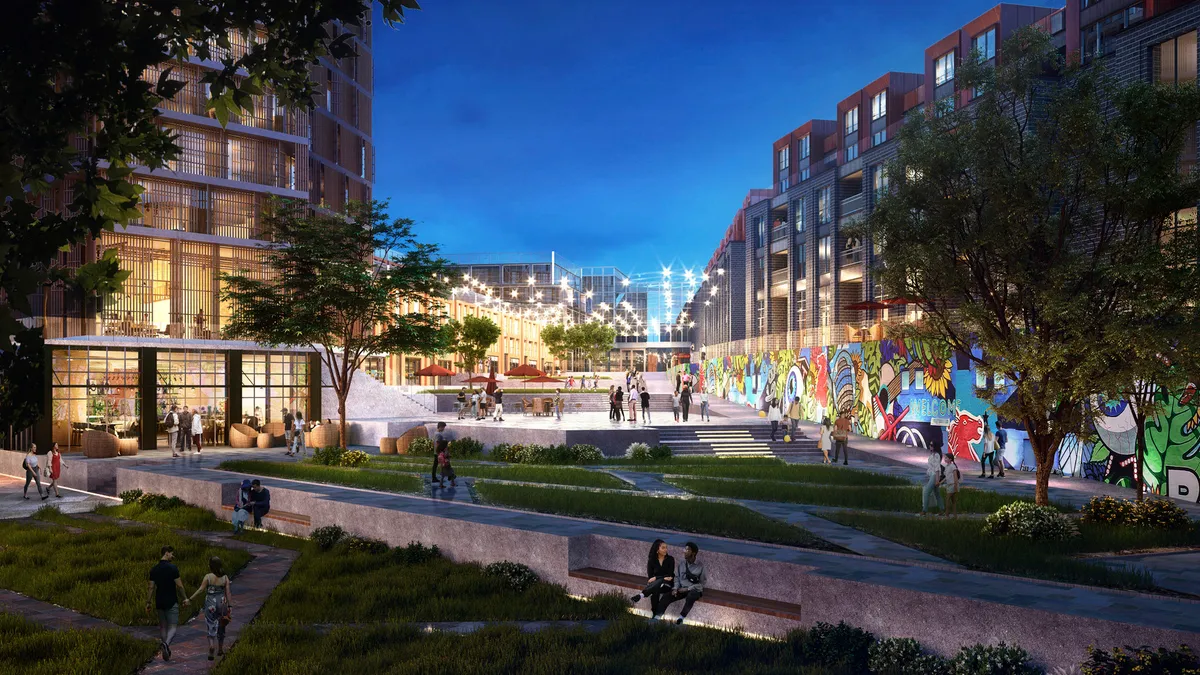The concept of the 20-minute city, or being able to reach any critical destination within a quick walk or bike ride, has taken on a heightened sense of urgency and interest during the pandemic.
Paris Mayor Anne Hidalgo incorporated the concept into her winning reelection campaign earlier this summer, and many U.S. cities are following suit by closing off countless miles of roads to help residents move around on foot, bicycle or even scooter.
The idea of a 15- or 20-minute city is nothing new, according to Gensler Principal in Cities and Urban Design Andre Brumfield. It dates back to Clarence Perry’s model of the neighborhood unit in the 1920s and has been seen more recently as Paris and Barcelona have designed their versions, he said.
But so far, these models have largely neglected to use a lens of racial and socioeconomic equity, according to Brumfield. And as the pandemic rages on, coupled with protests against systemic racism following the police killings of George Floyd and Breonna Taylor — and now the shooting of Jacob Blake in Kenosha, WI on Sunday — there's an opportunity for city leaders to rethink their neighborhoods through a more equitable lens.
"This is an opportunity for all of us to think about our neighborhoods much differently," he said.
According to Brumfield, the pandemic has highlighted issues that have plagued cities for years: affordability and a widening wealth gap. That gap can be seen in the current rent and eviction crisis, which Black households are disportionately affected by compared to White households. In addition to the racial disparities in COVID-19 deaths due to public health inequities in cities like Chicago where White residents live 8.8 years longer on average than Black residents.
The 20-minute city needs to look beyond walkability, according to Brumfield. "We always talk about walkability for neighborhoods as it relates to retail [and] shops… well a lot of those neighborhoods don’t even have shops [or]... cafes."
Instead, city leaders should start thinking about 20-minute neighborhoods as an investment strategy to bring in much-needed assets, he said.
To begin designing a more equitable 20-minute city or neighborhood, officials should take a comprehensive look at an area’s existing assets. Those assets can include parks and open space; accessibility to public transit; retail options; healthcare access; affordable and mixed-income housing availability; and internet access.
Cities should then build on those assets and identify what’s missing to "create a more holistic neighborhood," he said. "How can we talk about this 20-minute city as an investment strategy?"
Chicago Mayor Lori Lightfoot and the city's Department of Planning and Development are working on a related initiative with a recent $11 million investment via grants to close capital gaps for two developments in the city's South and Westside communities.
One of those initiatives, the "Auburn Gresham Healthy Lifestyle Hub," will renovate a long-vacant building into a community hub, making room for hospital capacity and providing more healthcare options to residents.
The second initiative is the "North Lawndale Surgical and Ambulatory Care Center," designed by residents, stakeholders and local nonprofits, and will include a workforce campus, cafe, event space, garden and retail bank.
"Set against the background of both COVID-19 and the issues of racial disparities brought to the forefront in the wake of the death of George Floyd, this project represents a critical extension of Sinai's legacy of reaching beyond our own hospital walls to provide much-needed resources to our community," Karen Teitelbaum, President and CEO of Sinai Health System, which is leading the North Lawndale initiative, said in a statement.
Those efforts will bring critical assets into historically under-invested parts of Chicago. "The city is only as healthy as its neighborhoods,"Brumfield said.











